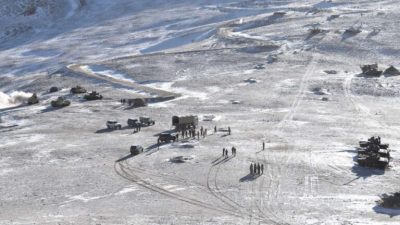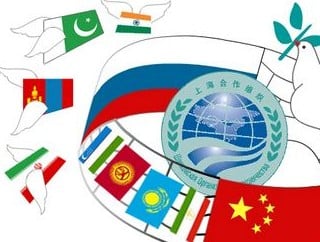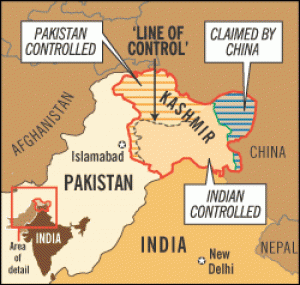India-China Agreement: Withdrawal of Troops From Disputed Ladakh Border Area
Further developments could be a nightmare for Washington.

All Global Research articles can be read in 51 languages by activating the “Translate Website” drop down menu on the top banner of our home page (Desktop version).
To receive Global Research’s Daily Newsletter (selected articles), click here.
Visit and follow us on Instagram, Twitter and Facebook. Feel free to repost and share widely Global Research articles.
***
China and India have agreed to withdraw their military troops from the disputed border area, near the latter’s Ladakh region in the Himalayas. Although there has been a lot of dialogue amid the tensions, this a somewhat surprising development, which, from an American perspective, could be the beginning of a nightmare. Both Beijing and New Delhi have issued similar-worded statements emphasizing the need to promote “peace and tranquility” in the region. Some friction points along the border still remain, however, particularly in Depsang and Demchok. In any case, this disengagement is the de-escalation of a series of frictions and military standoffs that had been going on since May 2020.
In 1962, both countries fought a war over the disputed area, but an agreement has never been reached. Tensions pertaining to this issue began to escalate in early 2020, after India accused its neighbor’s troops of invading the territory New Delhi claims as its own. Washington has been supporting India in this quarrel, and its State Department even accused Beijing of orchestrating the border clashes.
For the US, any increase in Indian-Chinese tensions has always been desirable, as part of the American Indo-Pacific Strategy. Moreover, the US-led QUAD or Quadrilateral Security Dialogue has been described by many as a “new NATO” for the region.
 India has thus been in a very complex position, being a member of the Shanghai Cooperation Organization (SCO) which is seen by some experts as a potential counterweight to NATO, and at the same time a QUAD member. It faces tensions on its borders over disputed territories with two nuclear neighbors, namely Pakistan and China.
India has thus been in a very complex position, being a member of the Shanghai Cooperation Organization (SCO) which is seen by some experts as a potential counterweight to NATO, and at the same time a QUAD member. It faces tensions on its borders over disputed territories with two nuclear neighbors, namely Pakistan and China.
In any case, even amid serious bilateral contentions, Eurasian nations have found room for cooperation on quite a number of levels. Faithful to its historic pragmatism, New Delhi has managed to maintain close ties with Moscow, even while it has been getting closer and closer to Washington. With Beijing, however, the situation was quite severe.
In May 2020, for example, there were border clashes involving soldiers from both sides. Then, in June 2020, at patrolling point 14, troops from the two powers clashed for six hours. As a result of that, 20 Indian soldiers and 25-40 Chinese ones were killed at the Galwan Valley during this standoff. For a while, the two nuclear powers even seemed to be on the brink of a new war.
However, after May-June’s Indian-Chinese standoff, in September, the Kremlin was already laying the groundwork for a meeting in Moscow which was attended by both the Chinese Foreign Minister and his Indian counterpart. In February 2021, the two Asian countries were already “back to business”, engaged in a number of bilateral investment deals. Moreover, throughout the year 2021, there were discussions about disarmament of troops in Ladakh. In April 2022, Chinese Ambassador to India Sun Weidong stated that both nations should work together towards keeping their bilateral ties “on the right track”, while keeping a “long-term perspective”.
Throughout this period, however, Washington-New Delhi ties grew stronger and stronger, fueled by Indian-Chinese tensions. In late October 2020, both states signed a game-changer defense deal, the Basic Exchange and Cooperation Agreement (BECA). This caused concern for many nationalist voices within India, which feared the country could lose part of its control over satellites to America. The very fact that it became part of a military communication network which includes its traditional rival Pakistan (a US ally) was also a point of tension.
In November 2020, during the Shanghai Cooperation Organization (SCO) summit, India accused the Pakistani authorities in Islamabad of using cross-border terrorism as an instrument of its state policy. At the same event, it also refused to support the Chinese BRI, being in fact the only country amongst the 8 SCO members to do so at that time. A large part of the project passes through Kashmir (claimed by both New Delhi and Islamabad).
Many analysts feared that in the context of a new emerging bipolarity, not to mention the new Cold War, the Hindu power would further strengthen its ties with the United States, as the latter is actively pursuing its policy of dual containment.
However, in spite of BECA, American pressure on India regarding Russia did not work: Moscow is delivering all S-400 systems to India by 2023, despite US sanctions. Both countries are also working on a new payment system for military deals, in a move which boosts the international de-dollarization process. Moreover, both India and China are sending troops to Russia for the Vostok 2022 drills.
Likewise, it would also appear that, border disputes aside, the country has no interest in antagonizing its Chinese neighbor and in fact they could further strengthen cooperation in other areas on a number of levels. Bipolarity looms in the horizon, but, alternatively, an age of multi-alignment and non-alignment might also be emerging.
In this scenario, India plays a somewhat pivotal role. Washington expects “absolute allies”, but increasingly overburdened as it is overextending its power in an effort to contain at once two superpowers (Russia and China), it has no choice but to practice restraint.
Indian nuanced foreign policy has always been pragmatic and multidimensional, and, by all indications, it will remain so, and thus the US cannot count on it for its cold war mentality driven agendas. Last month, Indian foreign minister Jaishankar said the “Asian Century” could only happen when his country joined hands with its Chinese neighbor. A small step towards it might have just been taken – and this in fact could be Washington’s greatest nightmare.
*
Note to readers: Please click the share buttons above or below. Follow us on Instagram and Twitter and subscribe to our Telegram Channel. Feel free to repost and share widely Global Research articles.
Uriel Araujo is a researcher with a focus on international and ethnic conflicts.
Featured image is from Indian Punchline


